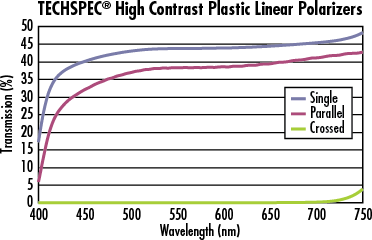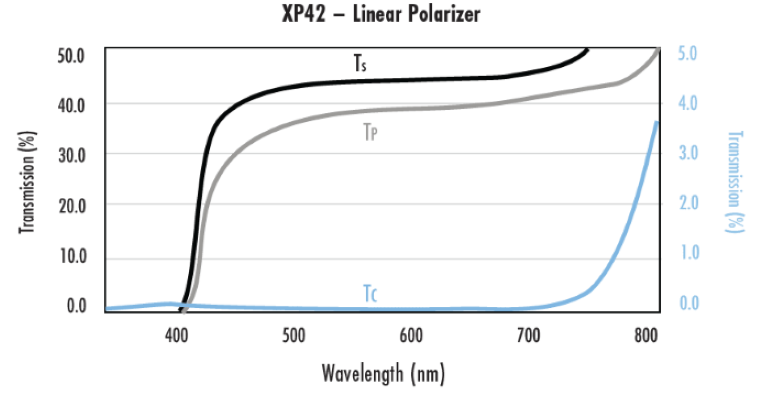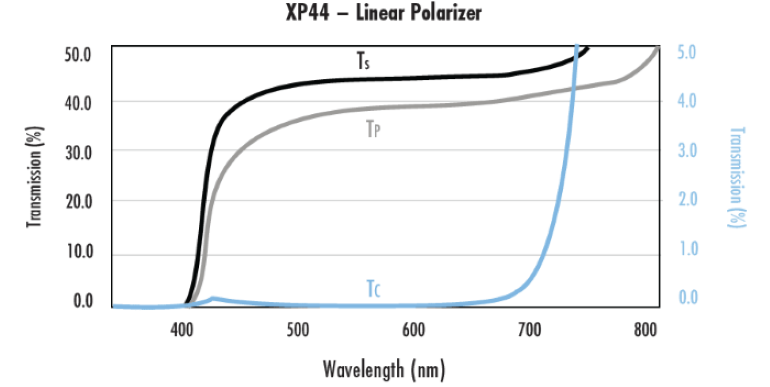
 TECHSPEC® components are designed, specified, or manufactured by Edmund Optics. Learn More
TECHSPEC® components are designed, specified, or manufactured by Edmund Optics. Learn More
Ideal for a range of imaging applications, TECHSPEC® High Contrast Linear Polarizing Film (XP42) features an excellent extinction ratio and high transmission from 400 – 700nm. This polarizing film is offered in multiple thicknesses; thicker polarizing film has increased rigidity. Available in sheets, TECHSPEC® High Contrast Linear Polarizing Film (XP42) can be cut to fit any application need.
Note: Polarizer Film with adhesive available.
If you have a need for any round, square, or rectangular size of a TECHSPEC High Contrast Linear Polarizing Film (XP42) in dimensions between 3mm and 600mm, please visit our Polarizing Film Tool. We’ll provide an immediate quote, and can deliver the part to your requested size in approximately 3 weeks. A full list of standard manufacturing tolerances and restrictions are listed. For fully customized polymer polarizers to your requirements, visit our Customized Polymer Polarizers Capabilities page.



or view regional numbers
QUOTE TOOL
enter stock numbers to begin
Copyright 2023, Edmund Optics India Private Limited, #267, Greystone Building, Second Floor, 6th Cross Rd, Binnamangala, Stage 1, Indiranagar, Bengaluru, Karnataka, India 560038
California Consumer Privacy Acts (CCPA): Do Not Sell or Share My Personal Information
California Transparency in Supply Chains Act
The FUTURE Depends On Optics®